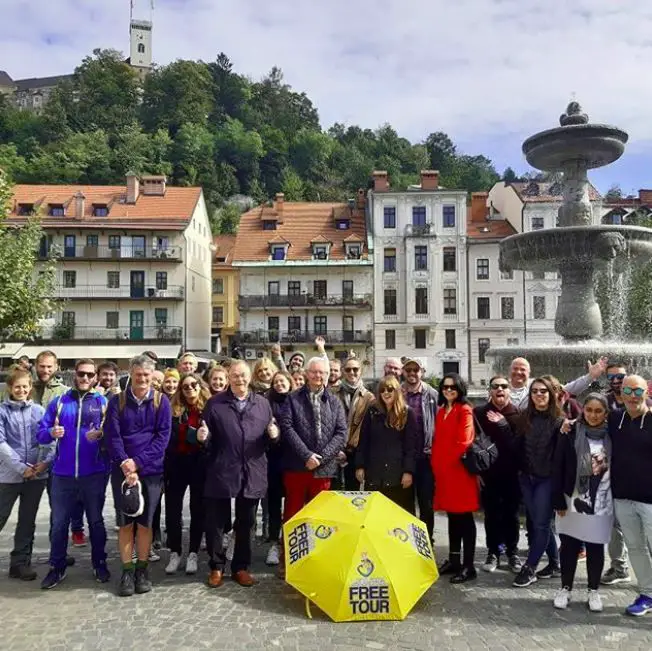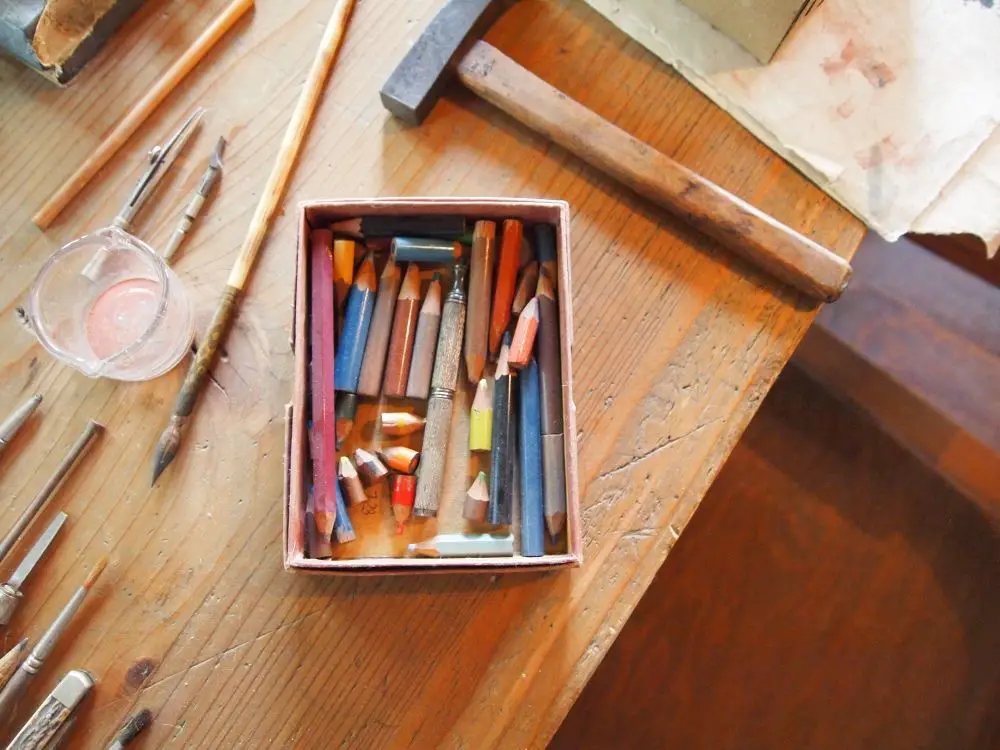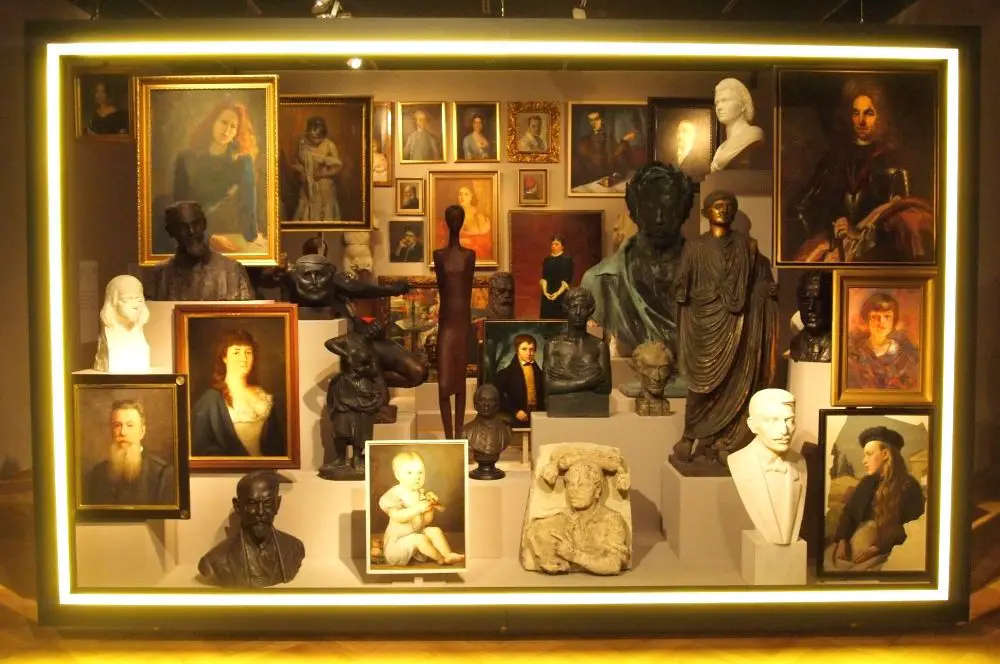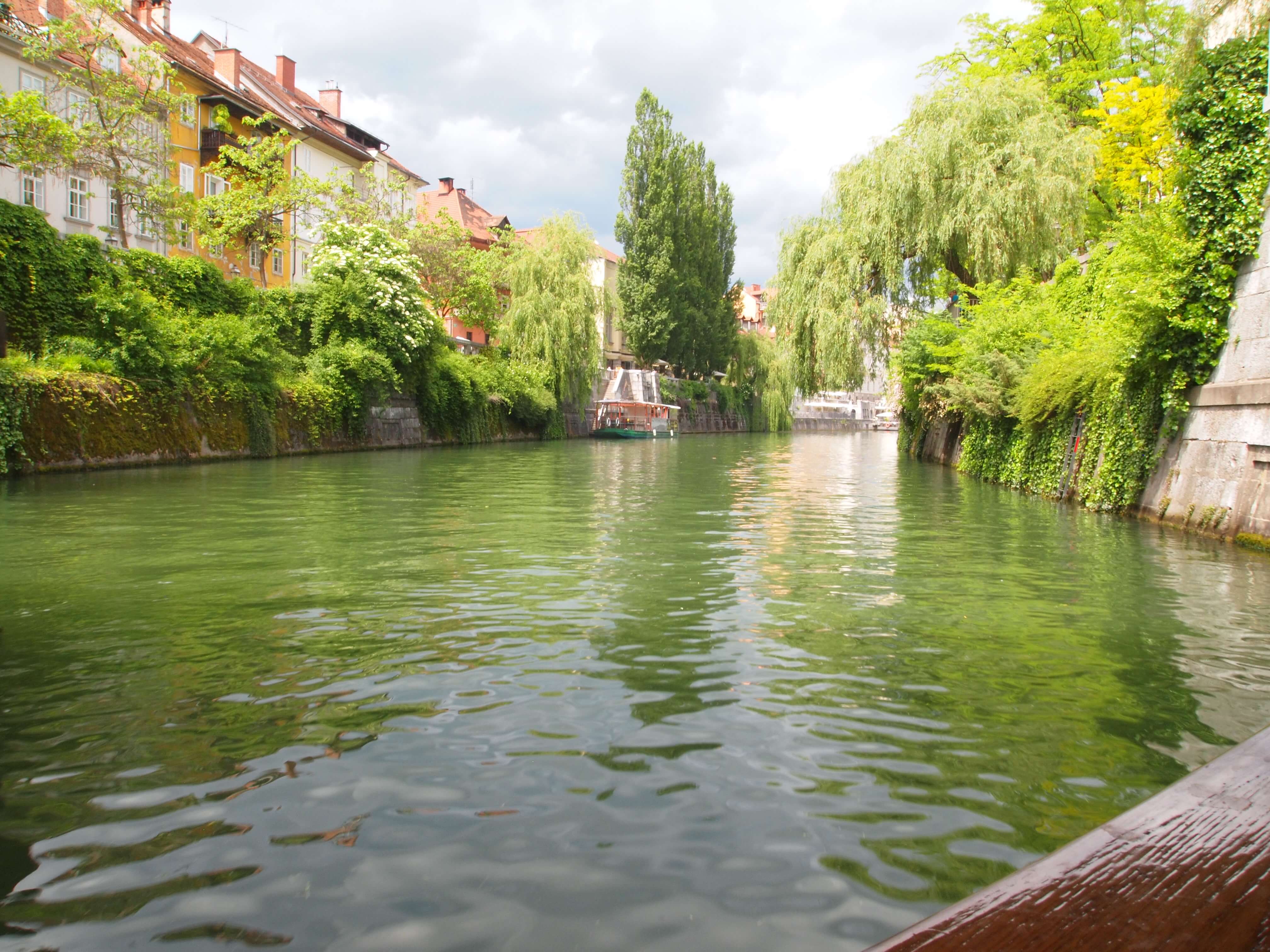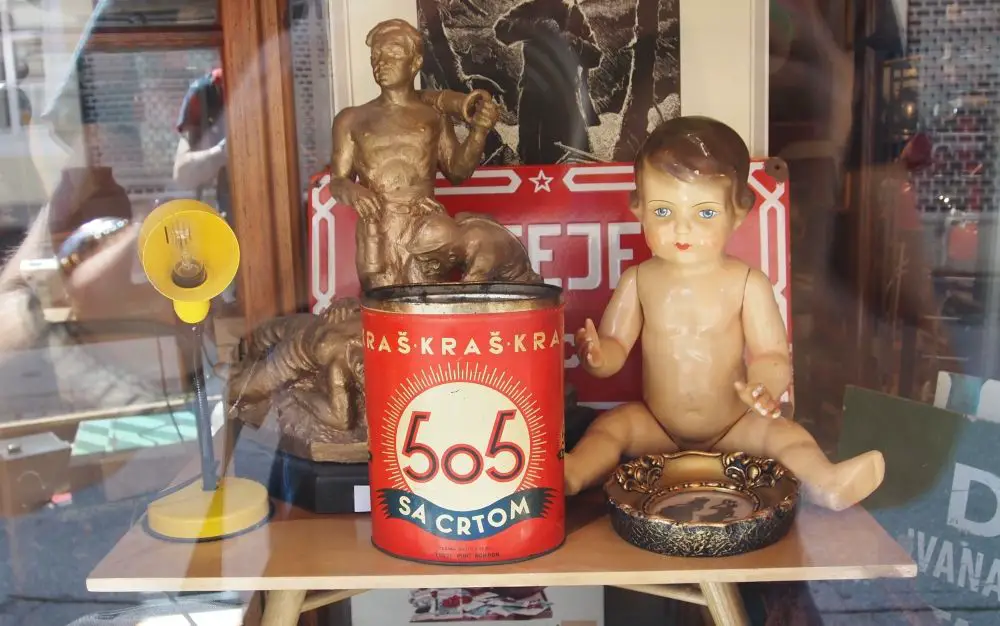News
Updated at 20:10, with details throughout
STA, 10 February 2020 - Strong winds, in particular in the east of the country, have been toppling trees and disrupting power supply since Sunday evening. One death case has been reported, with a tree falling on a vehicle on the Dravograd-Maribor road at around 5am, killing the driver.
Major power cuts were reported from the Zreče, Apače, Lendava and Ivančna Gorica areas, where the number of households affected totalled around 3,000, as well from the areas covered by power suppler Elektro Maribor, which spoke of roughly 7,000 households.
Elektro Celje moreover said at noon that 890 households had suffered power cuts, while the wider Celje area has also seen disruptions in the supply of drinking water as a result.
Many roofs were damaged, in particular in the north-east, in the area of Slovenjske Konjice, Velenje and Zreče.
In Šentjur a library was left without a roof, and in Ptuj, the wind blew off a part of the hospital roof. Firefighters rushed to the scene and prevented further damage. The safety of the patients and medical staff was not in jeopardy, according to the director of the hospital, Anica Užmah.
Announcing wind gusts of 70-100 km/h in the east and north-east and 70-90 km/h for other parts, the Environment Agency initially issued an orange warning - meaning the possibility of damage or accidents - for the entire country.
The alert for the north-east was upgraded to red this morning, which means people were encouraged to take active measures to prevent accidents.
Given the grave danger stemming from toppling trees, the Slovenian Forest Service has urged people to refrain from any activities in forests. The damage suffered by forests is expected to assessed in the coming days.
A year and a half since it was announced that a reality show was coming to the abandoned village of Slapnik, the producers announced they are looking into alternative locations in Italy and Spain.
Slapnik used to be an abandoned village that only locals knew about, set in the middle of Goriška Brda, one of the most scenic wine growing regions of Slovenia.
Then the village was spotted by a production group, Tempo, as an appropriate location for their Back to the Village reality show, in which 17 couples from 17 countries would compete at renovating a decaying house. The show was to be broadcast in 17 European countries and thereby promote the region to a broad international audience, while it would renovate and so revive the entire village of Slapnik.
All but one of the owners responded positively to Tempo’s offer to sell their falling down properties. Apparently an elderly woman living in Australia refused to sell her share of a collapsing house in the middle of the village, citing possible negative consequences this might have for her pension. The production company offered her an apartment in Nova Gorica instead. She wasn’t happy with that either, and demanded a two-bedroom apartment in Ljubljana, over five times the value originally offered to her in cash.
Apart from this, the producers have also been citing poor support of the community for the project and a slow bureaucratic process, preventing the project from moving forward.
Meanwhile, following the project’s announcement visitors started to flock into Slapnik. According to Franko Markočič, one of the owners who’d like to see the project moving forward, uncontrolled and high volume visitors damaged the privately owned gravel road that leads to the village, entered houses, and took anything they could carry away. The owners asked Brda municipality to help with the renovation of the road, but they were turned down.
Brda Mayor Franc Mužič rejected the suggestion that the local government refused to help with the road renovation, stating for Primorske novice that the villagers should get organised themselves and that the municipality would cover the expenses. He also rejected any hints that the municipality did not engage enough for the project to move forward.
But Mužič doesn’t sound particularly alarmed by Tempo’s threats to move the project somewhere else: “the municipality has not given up yet, […] we have other options as well, sooner or later the renovation will happen. […] Renovation of Slapnik could be incorporated into the Brda Spa project as an annex or an extension of the Spa, but that does not happen overnight.”
STA, 9 February 2020 - Slovenian Tadej Pogačar (UAE Team Emirates) has won this year's Tour of Valencia, having won stages two and four of the race earlier this week. This is another major success for the 21-year-old cyclist after he placed third at his first Grand Tour, La Vuelta last September, when he claimed the white jersey as the best young cyclist.
Today's 98-km stage from Paterna to Valencia was won by Dutch Fabio Jakobsen (Deceuninck - Quick Step), but Pogačar managed to keep the overall lead for his third one-week race victory of his career. A year ago he won the Tour of Algarve in Portugal and last May the Tour of California in the US.
Pogačar secured the overall victory by winning yesterday's queen stage with the finish on the mountainous Sierra de Bernia, after paving the way to the success with Thursday's win of stage two, when he defeated Spanish Alejandro Valverde, one of the most successful road racing cyclists at the moment.
"After all the effort put in during the winter to get ready for the new season, this victory means tremendously to me. This is really something exceptional." Pogačar believes to be well prepared, yet not as much as at La Vuelta last year, when he placed behind fellow Slovenian winner Primož Roglič and second-placed Valverde.
* Overall standings 1. Tadej Pogačar (SLO/UAE Team Emirates) 18:43:00 2. Jack Haig (AUS/Mitchelton-Scott) + 0:06 3. Tao Geoghegan Hart (GB/Ineos) the same time 4. Dan Martin (IRL/Israel Start-up) 0:13 5. Dylan Teuns (BEL/Bahrain - McLaren) 0:23 6. Wout Poels (NED/Bahrain - McLaren) 0:25 7. Ion Izagirre (ESP/Astana) 0:32 8. Ruben Fernandez (ESPFundacion - Orbea) 0:49 9. Oscar Rodriguez (ESP/Astana) 1:11 10. Alejandro Valverde (ESP/Movistar) 1:14 ... 14. Jan Polanc (SLO/UAE Team Emirates) 1:36 24. Matej Mohorič (SLO/Bahrain - McLaren) 3:23 77. Luka Mezgec (SLO/Mitchelton-Scott) 17:42
STA, 7 February 2020 - The Slovenian police recorded a total of 16,099 illegal crossings of the border last year, almost 74% more than in 2018, with the highest number of migrants coming from Pakistan, Algeria and Afghanistan.
Citizens of Pakistan were involved in a total of 4,101 illegal crossings, followed by citizens of Algeria (1,892) and Afghanistan (1,733), show data from the police, the Ministry of the Interior and the Government Office for the Support and Integration of Migrants.
August was the busiest month for police officers in this respect, as 2,392 illegal crossings of the border were recorded that month, followed by October (2,268) and September (1,987).
The number of applications for international protection was also up last year to 3,821, which is 33% more than in 2018.
Only 85 persons were granted international protection, down from 102 in 2018, while procedures were suspended in 3,273 cases. The vast majority of suspensions are the result of applicants leaving Slovenia of their own accord.
The largest number of foreigners returned to Slovenia by foreign authorities came from Italy (255), while Slovenia returned the biggest number of foreigners to Croatia (11,026 or almost three times more than in 2018).
As of 6 February, a total of 298 applicants for international protection reside in Slovenia, almost half of them in the asylum centre in south-western Ljubljana.
The number of persons who have been granted international protection stands at 725, with three-quarters of these persons accommodated in private homes.
STA, 8 February 2020 - The share of Slovenians working from home is above EU average, with data released by Eurostat earlier this week showing that 6.9% of the employed Slovenians between 15 and 64 years of age usually worked from home in 2018.
The share in the EU was 5.2%, and had not changed much over the past decade. However, the share of those who sometimes work from home increased from 5.8% in 2008 to 8.3% in 2018.
Slovenia ranks 7th among the 27 member countries in terms of the share of those who work at home.
The Netherlands tops the list with 14% of the employed usually working from home, closely followed by Finland (13.3%), Luxembourg (11%) and Austria (10%).

Image from Eurostat, with Slovenia highlighted
The lowest proportions of those who usually work at home was recorded in Romania (0.4%) and Bulgaria (0.3%).
It is the self-employed who work from home most often with the share of such among them at 18.5% compared to only 3% among employees.
The highest rates of the self-employed usually working from home were recorded in Finland (46.4%), the Netherlands (44.5%) and Austria (43.6%).
The share of employed women usually working in 2018 was slightly higher than the share of men, at 5.5% and 5%, respectively.
The share of those working from home increases with age. In the EU, just 1.8% of 15-24 year-olds usually worked from home in 2018, compared to 5% among 25-49 year-olds and 6.4% among 50-64 year-olds.
More on this data can be found here
The second Bi-Flamenko festival, the bi-annual treat for all lovers of the titular music and dance, in traditional and modern forms, is back in Ljubljana’s Cankarjev dom with a short but packed and varied programme, featuring music, dance, a live DJ show. movie and free workshops.
This edition starts on Friday, 14 February, and runs until the 18th. There’s a lot to enjoy, but not so much that it’s overwhelming, with enough variety that at least one show or event should appeal and perhaps get you out of the house and off the streets for some hot-blooded excitement in the bleak mid-winter. The pictures and videos below give just a taste of what’s on offer, with a link to the full programme, times, tickets and so on at the end of the story.
Friday 14, February
Friday night there’s the two-woman dance show ENO – ONE, guitar from Rafael Riqueni, and live mix and video from Los Voluble in Flamenco is not a crime.
A photo used by Cankarjev dom to promote ENO - ENO, taken by Andrej Lamut
Saturday 15, February
There are free public flamenco workshops called “Feel the Rhythm”, to be held by Eduardo Guerrero, the new Flamenco god (according to the Dutch press, with some support in the second and fourth videos below), a theatrical dance piece called Space between us that considers bullfighting, and a show from Vanesa Aibar called Sierpe (Serpent). Eduardo Guerrero also takes to the stage, after having taught two workshops, in a show with Slagwerk Den Haag called ¡Klick-Pluck-Planta-Tacón-Click-Tap-Clack! – ask for it by name.
Sunday, 16 February
A show from Nairuz and the David Carmona Trio offers two acts for one ticket. The first blends the rich heritage of Turkish Sufi music and flamenco, with dance from Urška Centa, while the second will present Un sueño de locura.
Also on Sunday, and again on Monday, there’s a screening of the film Impulso: Rocío Molina, the headliner of the first Bi Flamenco Festival, returns with a film chronicling the making of her show “Fallen from Heaven”, which brought her fame and made her the leading figure in contemporary flamenco dance.
Tuesday, 17 February
The festival then comes to a close with Patricia Guerrero’s Distopija. As it says in the promo “Guerrero’s body is bursting with flamenco, and she uses it to draw the most fabulous geometric figures. Playful, nimble, but with tremendous power in her feet.”
You can see more details and get tickets here
Keep up with the daily news in Slovenia by checking the morning headlines here. What to find out what happened last week in Slovenia? Look no further.
The following schedule was prepared by the STA:
MONDAY, 10 February
SKOPJE, N Macedonia - Parliamentary Speaker Dejan Židan will start a two-day official visit to North Macedonia.
ANKARA/ISTANBUL, Turkey - Foreign Minister Miro Cerar will pay a two-day official visit to Turkey, where he will also attend a Slovenia-Turkey business conference.
LJUBLJANA - Public health insurer ZZZS is to speak to the press about changes to rules governing compulsory health insurance.
LJUBLJANA - The Slovenian Chamber of Pharmacy is to speak to the press ahead of World Day of the Sick.
LJUBLJANA - The Student Organisation is to present a platform containing all the work experience records of individuals engaging in student work.
LJUBLJANA - Final event of the annual fund-raising book donation campaign organised by The Austrian Embassy and the Klagenfurt-based publisher Mohorjeva Družba.
LJUBLJANA - The Statistics Office will release industrial output figures for December.
TUESDAY, 11 February
LJUBLJANA - A conference on quality and accessible long-term care will be organised by the European Commission Representation in Slovenia and the Chamber of Commerce and Industry (GZS).
LJUBLJANA - The Energy Industry Chamber of Slovenia will discuss the draft National Energy and Climate Plan.
LJUBLJANA - The parliamentary Finance Committee will discuss a proposed bill designed to provide legal recourse and compensation for holders of subordinated bank liabilities wiped out in the 2013 bank bailout.
WEDNESDAY, 12 February
BRUSSELS, Belgium - Defence Minister Karl Erjavec will attend a two-day NATO ministerial.
LJUBLJANA - The parliamentary Infrastructure, Environment and Spatial Planning Committee will discuss a draft resolution on the national environment protection programme for 2020-2030.
LJUBLJANA - Future trade between the UK and the EU 27 will be discussed at an event organised by the British Embassy, the British Slovenian Chamber of Commerce and the Chamber of Commerce and Industry (GZS).
LJUBLJANA - The parliamentary Foreign Policy Committee will discuss a declaration of support to the protection of political and civil liberties in Spain, which has been proposed by a group of MPs.
CELJE - A three-day conference on long-term care in Slovenia will get under way.
LJUBLJANA - The Chamber of Commerce and Industry (GZS) will host an agribusiness conference.
LJUBLJANA - An illustrated Migration Glossary for the Young, a project of the SLOGA platform of NGOs, will be presented.
THURSDAY, 13 February
LJUBLJANA - The European Investment Bank (EIB) will sign an agreement with the national motorway company DARS on the financing of the second tube of the Karavanke tunnel.
LJUBLJANA - Weekly government session.
LJUBLJANA - The parliamentary health and infrastructure committees will debate pollution in the central Soča Valley as a result of the co-incineration of waste.
LJUBLJANA - The Forum 21, an outfit led by former President Milan Kučan, will organise a discussion entitled 30 Years of Slovenia.
LJUBLJANA - The Statistics Office will release job vacancy figures for the last quarter of 2019.
FRIDAY, 14 February
MUNICH, Germany - Foreign Minister Miro Cerar will attend the Munich Security Conference.
LJUBLJANA - Open doors days for primary and secondary school students; until 15 February.
LJUBLJANA - Bi Flamenco, a biennial festival dedicated to flamenco, will get under way; until 18 February.
SATURDAY, 15 February
PTUJ - The start of Kurentovanje, the biggest carnival event in Slovenia; until 25 February.
KRANJSKA GORA - The 56th Golden Fox World Cup meet for women alpine skiers will get under way with the giant slalom.
SUNDAY, 16 February
KRANJSKA GORA - The slalom event will be held as part of the 56th Golden Fox.
Check the date at the top of the page, and you can find all the "morning headlines" stories here. You can also follow us on Facebook and get all the news in your feed.
A schedule of all the main events involving Slovenia this week can be found here
This summary is provided by the STA:
Prešeren's poems echoing on Culture Day
LJUBLJANA - Poems by France Prešeren were read at several events on Culture Day when Slovenia paid tribute to its most celebrated poet and celebrated art. A number of events took place around the country and many museums and galleries opened their doors to visitors free of charge. The main ceremony was held in front of Prešeren's home in Vrba, the village in the north-western Gorenjska region where he was born.
MEP Fajon pledging support to Serbia in preparations for election
BELGRADE - Slovenian MEP Tanja Fajon (S&D/SD), the chair of the European Parliament's Delegation to Serbia, has vowed that the bloc would continue assisting the country in ensuring a fair election in April, as she paid a visit to Serbia together with European Commissioner for Enlargement Olivér Várhelyi and Rapporteur for Serbia Vladimir Bilčik (EPP). Meeting Serbia's government, opposition, media and NGO representatives, Fajon urged the country to provide conditions for a fair election and enable the media to report freely and objectively on the developments.
Visiting Ljubljana? Check out what's on this week, while all our stories on Slovenia, from newest to oldest, are here
If you're learning Slovenian then you can find all our dual texts here
If you're not in town for the week of this guide (10 - 16 February, 2020) then you can see all the editions here, and if there's event or activity you want to promote in a future edition of What's on in Ljubljana please get in touch with me at flanner(at)total-slovenia-news.com or try and find me on Facebook. If you want something a little different and easy to print, then a comprehensive PDF of events for the next seven days, as prepared by Ljubljana Tourism, is here. If you're in town and want to follow the news then check out our regular morning headlines for Slovenia here.
Other than Valentine’s Day the focus of this week is for many Bi Flamenko, the International Flamenco Festival, with several music and dance shows every day, along with free workshops. This starts on Friday (the 14th) and runs until 18 February. You can see videos of nearly all the performers here.
Monday, 18:00, the Australian band Thy Art Is Murder returns to Kino Šiška with their latest album, Human Target, with support from Carnifex, Fit For An Autopsy and I Am. Wednesday the same venue will see The Comet Is Coming in a show that starts at 20:00, a London band said to draw on the work of Sun Ra, Jimi Hendrix and Frank Zappa. Or as BBC Radio 6 say for the video shown below, “body shaking electronic groove and melody from the electro-jazz threesome”.
A new book is came out last week that tells some of the stories of Trubarjeva cesta – you can learn more about it here. If you want to buy a copy, look / ask around on your next visit to the street.
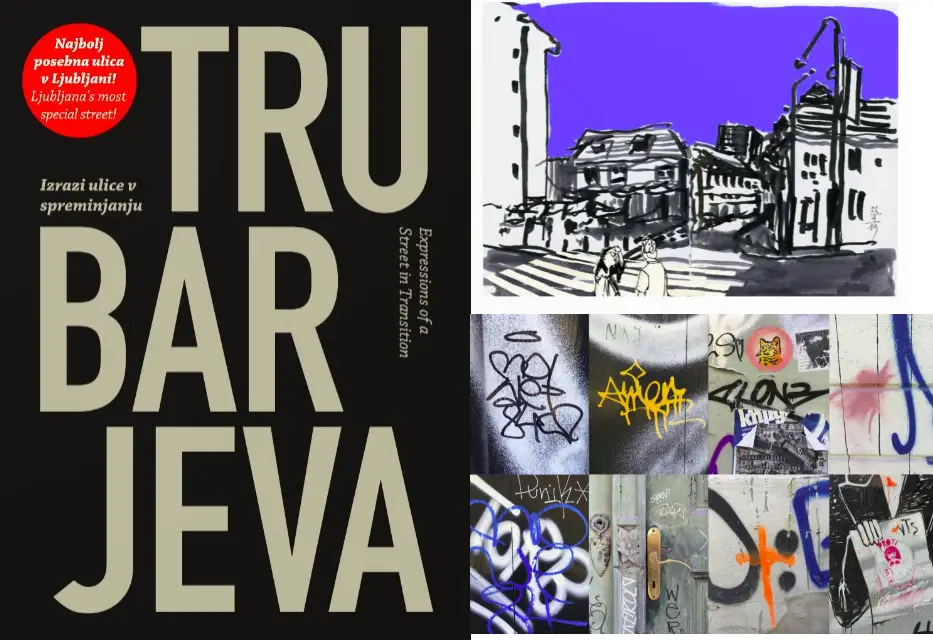
Ljubljana is forecast to be the fastest-warming city in the world over the next few decades.
Still open until 5 March, 2020, Magic Ice-rink Lumpi Park offers 600 m2 of the covered ice surface and 180 m of ice-skating paths which enable you to skate through the Sports park Savsko naselje, at Kranjčeva ulica 24. Details here.
Thursday the beautiful venue of Križanke summer theatre will host Nadia Ternifi (soprano), Tanja Šterman (piano) and Urban Stanič (piano), playing Strauss, Liszt, Gounod, Mozart, Wagner and Bach. Tickets here. You can see the first two playing Puccini above. The same evening (13th), the Slovenian Philharmonic (Kongresni trg 10) will have a show called Love & Music, with a cycle of seven orchestral poems by Lucijan Marija Škerjanc entitled Gazelles, marking the 120th anniversary of the birth of one of the key figures of Slovenian music. You can hear what these sound like below.
Friday is Jazz Night at the Castle, an event that often strays outside the genre, and this week it’s The Authentics Skaband at 21:00. For something completely different consider Kinodvor’s annual Valentine’s Night programme of erotica, porn and honest trash, Kinosloga. Retrosex. This year (details) the all-nighter presents La Grande bouffe, In Love, and Boys in the Sand.
New, newish and notable movies – such as the 20th anniversary re-release of Jebiga, and A bout de souffle at Kinoteka – include the following.
How much do tourists spend in Slovenia? Find out here
You may have heard about Free Tour Ljubljana, the tour company that’s #1 on TripAdvisor for the city and gives away its main product. What’s the deal with that? Find out here.
While the Old Town is quaint, and full of music, where does Ljubljana really shop? One popular answer is BTC City, a vast complex of malls, entertainment facilities and more, including more than 70 different food vendors, offering everything from Slovenian to Thai, Indian to Italian, Mexican to Chinese. Check out a visit before the recent renovation was finished for some idea of what's on offer here.
You're in the town of Slavoj Žižek, but do you find yourself lost when conversation turns to the philosopher? If so, check out our collection of quotes and clips to learn more.
- Cinemas and films
- Clubbing
- Live music
- Theatre and dance
- Harm reduction and drug testing
- Things to do with children
- LGBT+ Ljubljana
- Ljubljana Castle
- Museums and galleries
- Other things to do in Ljubljana
- Daytrips
- Getting around
- Emergencies
Cinemas and films
You can read about all the cinemas in town here, while a selection of what’s playing this week is below, and note that kids' movies tend to be shown in dubbed versions, while non-English language movies for older viewers will have Slovenian subtitles.Parents should also pay attention to Kinobalon, which is Kinodvor's regular weekend series of film screenings and events for children, from babies on up, with special parent/child events, "first time in a cinema" screenings, and babysitting. Learn more about it here, and see the current schedule here.
Note - most children's films will be dubbed (sinhronizirano) - for subtitles look for 'podnapisi'.
Kinodvor –This is an arts cinema, not far from the train station, that shows new features as well as hosting the occassional festival.
Kinoteka – And not far from Kinodvor you can find this revival cinema, which shows art house classics along with some deep dives in the archives.
Kino Bežigrad - A relatively small theatre, but one which usually has the biggest of the new releases.
Kolosej -The multiplex out at BTC City Mall shows all the big movies, with well over a dozen titles on the schedule, although note that there are far more movies than screens, so some of the older ones mayonly be playing once or twice a week.
Komuna – The cinema in a basement behind Nama department store shows two or three different features a week, usually including the biggest titles.
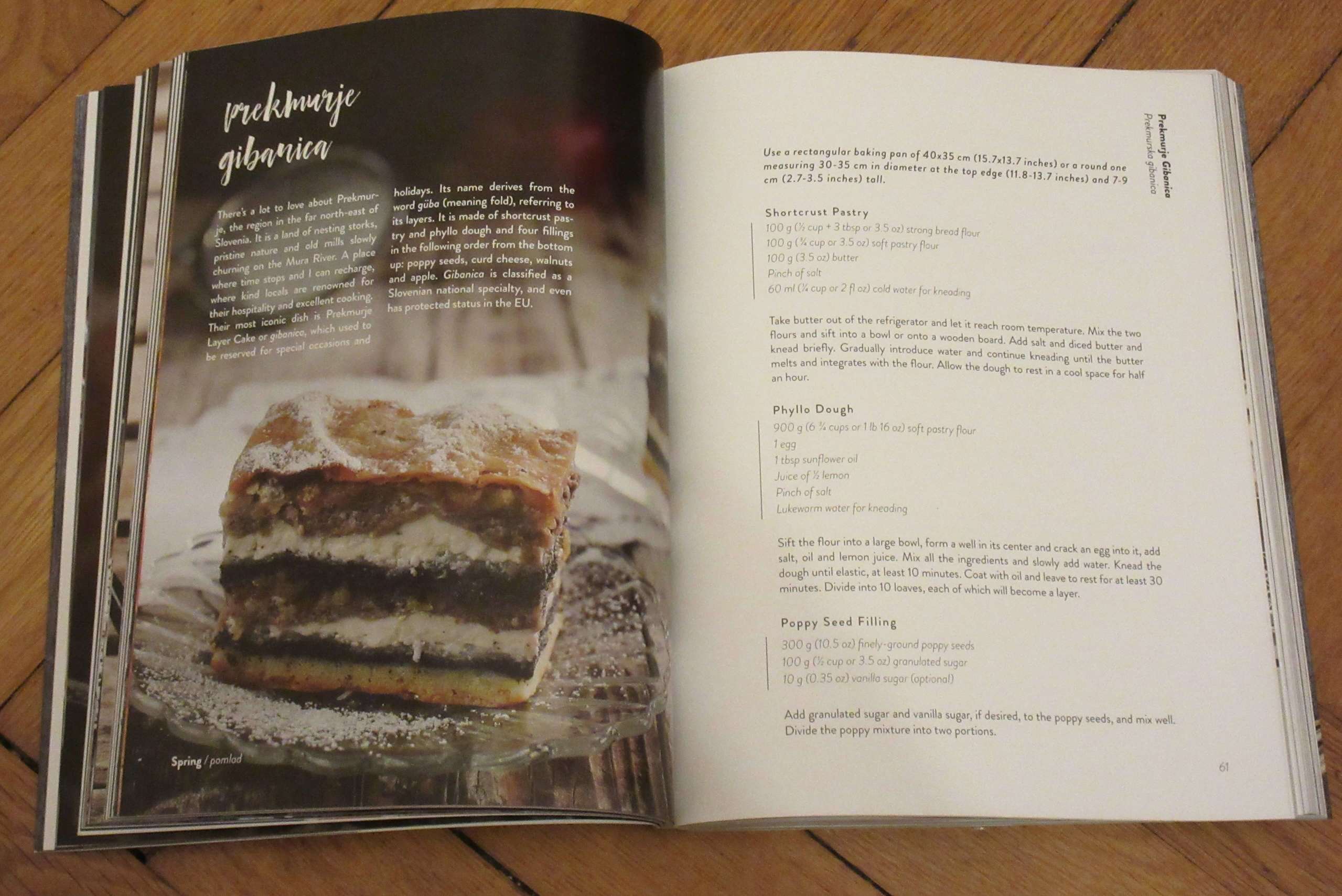
In town and looking for a gift or souvenir? Take a look at Cook Eat Slovenia - the book.
Know that big triangular building behind the train station? Learn what's inside here.
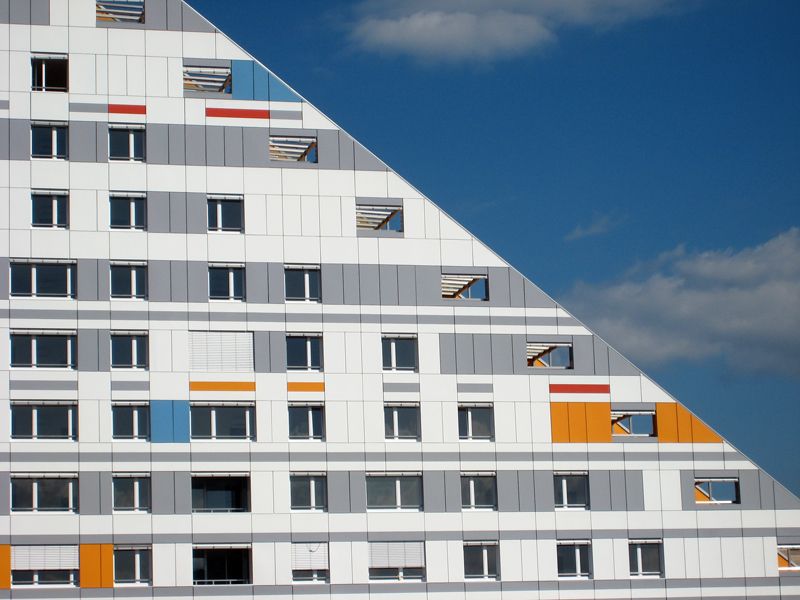
Photo: Genius loci d.o.o.
Clubbing
Compared to some European capitals it can seem that nightlife in Ljubljana ends rather early, especially along the river, but there are still bars that stay open late and clubs were you can dance until dawn, and perhaps the best place to stumble across something interesting is the legendary Metelkova. Be aware it's a grungy kind of place and not for all tastes, but also that there's considerable variety to found within the various clubs there, from death metal to electropop, gay cabaret to art noise. You can read "the rules" of the place here. And if you're curious about how the place started then read our story, and look at some pictures, about last year's 25th anniversary.
Božidar - DJ events aren't too common here, but when they happen they often have a big name.
Channel Zero – DJs shows here include regular dub nights as well as electronic music.
Gala Hala – Another Metelkova venue, you can sometimes hear bhangra and Bollywood here, but more often funk, hip hop, breakbeat and so on.
Klub Cirkus – The more commercial end of clubland, and a venue that aims to serve the student party scene. Expect house, anthems, and bangers.
Klub K4 – The home of techno, old and new, along with various other electronic genres,
Koncertna Dvorana Rog– There are irregular DJ sets at this underground (not literally) venue at the far end of Trubarjeva cesta, and they range from techno to goa to drum'n'bass.
Orto Bar– 80s and 90s throwback nights can often be found here, along with rock-based DJ sets.
Live music
Balassi Institute – Free Hungarian music, when available, from the Hungarian cultural institute just a short walk downriver from Dragon Bridge.
Cankerjev dom – The main arts venue in the country hosts classical, opera jazz, folk and occassinally pop.
Cvetličarna – Regional pop and rock concerts can be found here.
Channel Zero – This Metelkova venue sees live shows from punk and rock bands, as well as others.
Gala Hala – Another Metelkova venue with indie bands of various styles.
Kino Šiška – One of the top live venues in the city, with a varied programme that include indie, rock, pop, experimental, hip hop, and so on.
Klub Gromka – Live music is often metal, from sludge to stoner, death to thrash, while punk bands also appear, as do others.
Križanke – The venue that hosts the Ljubljana Festival often has classical music, and some rock, in the open air.
Orto Bar– The home of live rock, metal, punk and other guitar-based genres.
Pinelina dnevna soba – LIve music is rare here, but it does happen.
Slovenska filharmonija– Classical music in the centre of town.
SNG Opera and Ballet - As the name suggests, here you'll find the best of opera and ballet in the country.
Španski borci - While dance is more common here, they also have some contemporary and experimental music shows.
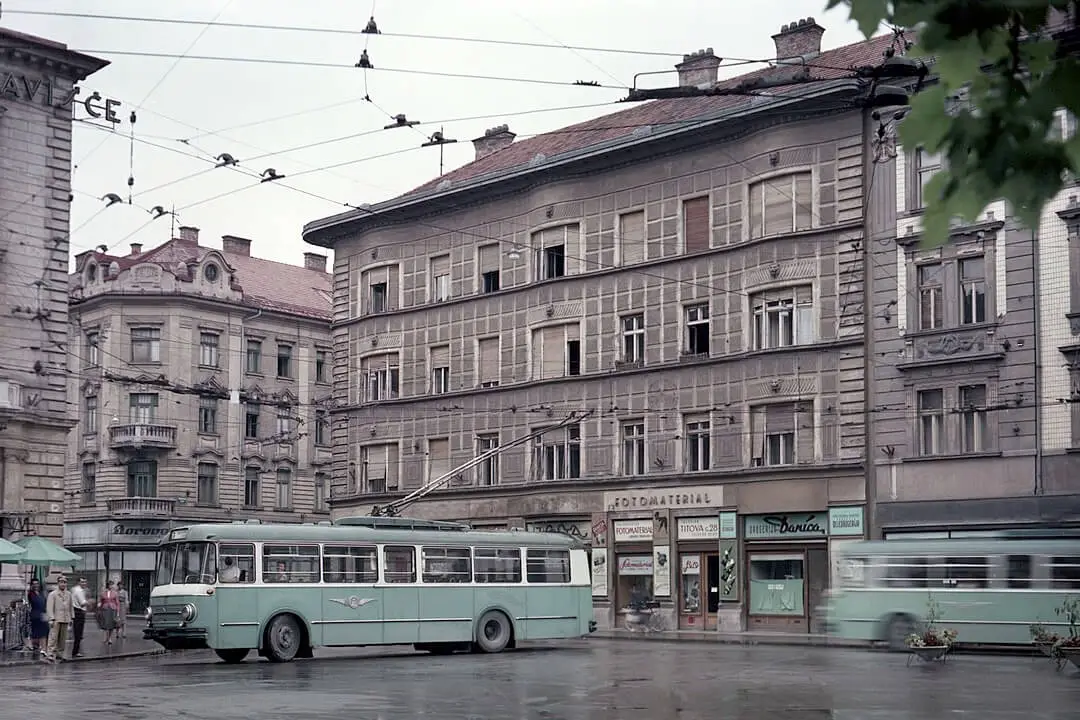
Slovenska cesta, 1959. Wikimedia. See more pictures of Old Ljubljana here
Theatre and dance
Cankerjev dom- The main arts venue in the country always has something of interest going on.
Gledališče IGLU - IGLU Theatre – Saturday night this group is usually putting on an English improv show somewhere in town, but it’s generally promoted after this is written, so check the Facebook before putting on your shoes.
Kino Šiška – One of the top live venues in the city also hosts some dance performance, often of the more experimental variety.
Mini Teater Ljubljana –The English schedule of varied performances, for adults and children, for the month is here.
Ljubljana Puppet Theatre - Puppetry has a long and noble tradition in Slovenia, and you can see performances for children and adults (including non-puppet shows) drawing from the Theatre's rich repetoire as well as new productons.
SNG Opera and Ballet - As the name suggests, here you'll find the best of opera and ballet in the country.
Španski borci - The home ofcontemporary dance(and the EnKnapGroup) in Slovenia.
Pocket Teater Studio– There are regular flamenco evenings at perhaps the smallest venue town, but note that the number of seats is very limited, and thus you should make a reservation via This email address is being protected from spambots. You need JavaScript enabled to view it. or 070 325 522.
Harm reduction and drug testing
Alcoholics Anonymous has an English language meeting every Tuesday, 19:00 in Poljane – email for more details: This email address is being protected from spambots. You need JavaScript enabled to view it.
Drogart is an organization that aims to minimise harm on the party scene, and offers drug-testing services and reports on their webpage. It’s in Slovene, but you can Google translate it or work things out yourself, and our story on the group is here.You can find the latest warnings on fake drugs and high strength pills and powders (in Slovene) here. However, be aware that all the usual drugs are illegal in Slovenia.
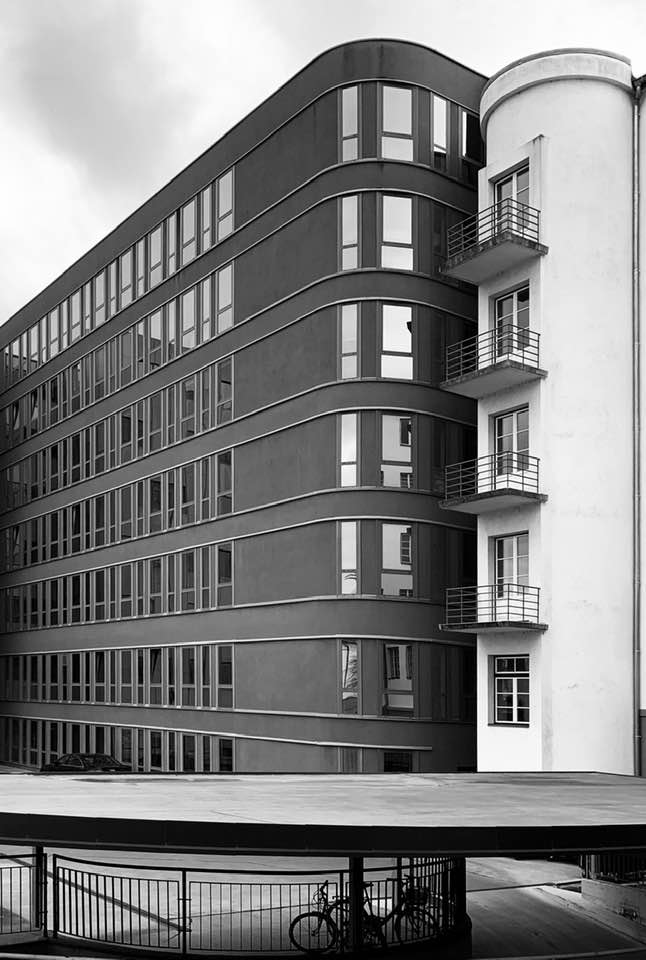
Photo: Igor Andjelič. See more of his work here
Looking for something different to eat? Trubajeva cesta, running right by Dragon Bridge, has the greatest concentration of "ethnic food" places in Ljubljana, and thus perhaps the country. Check out our walk through guide as of June 2019.
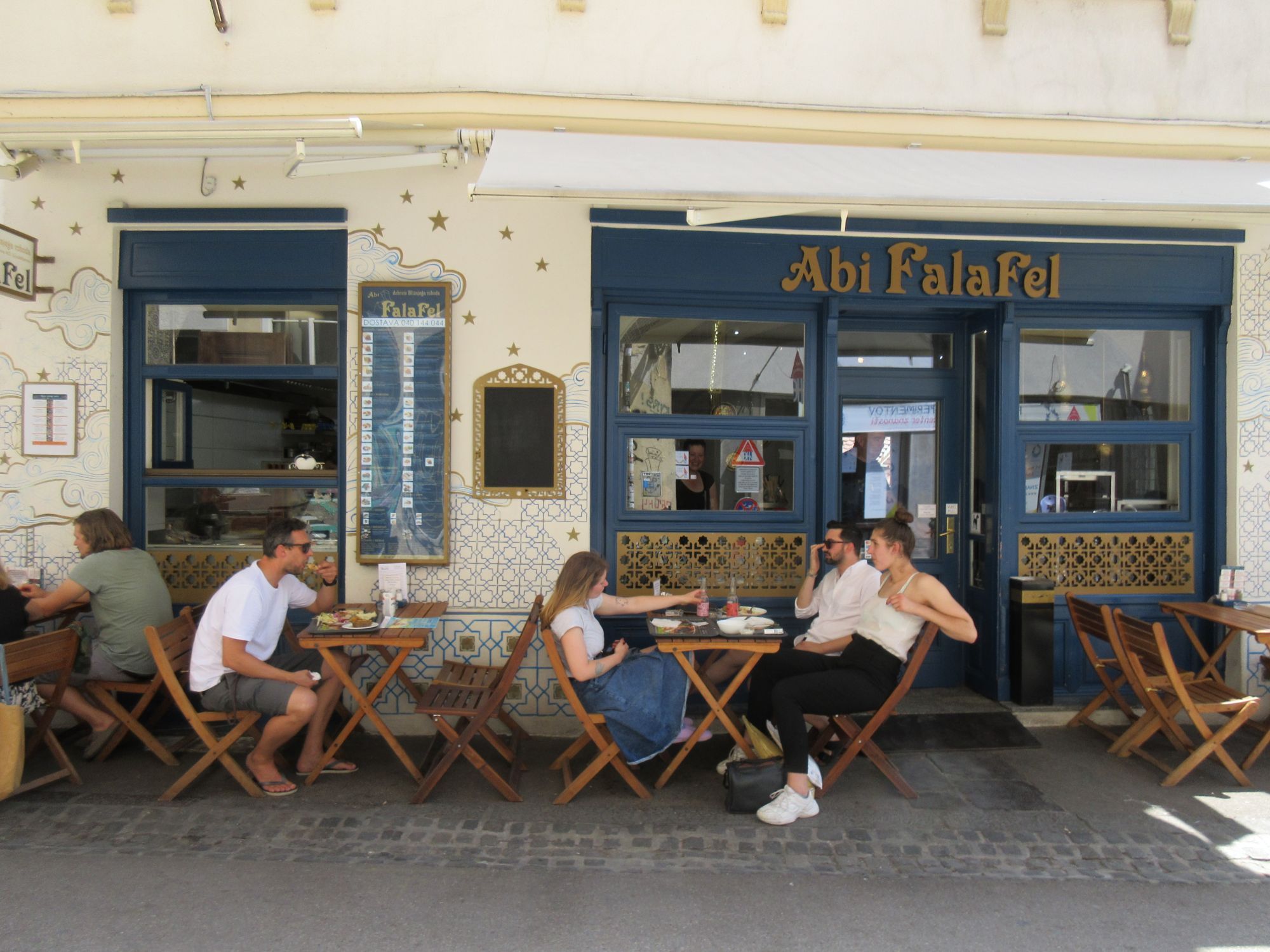
In warmer days than you'll see this week. Photo: JL Flanner
Things to do with children
You can find our Top 12 list of things to do with kids in Ljubljana here. If want to read more about the philosophy behind the wonderful House of Experiments look here, while our trip to the Museum of Illusions is documented here, and there’s always riverside walks, pizza and ice cream. With regard to the latter, take a look at our guide to six places that serve good ice cream in winter, and thus are serious about the dessert.
Mini Teater Ljubljana – The season sees a lot of puppet performances for children, in Slovene, at this theatre not far from Križanke. The English schedule for the month is here.
Ljubljana Puppet Theatre - The puppet theatre near the Central Market and next to the Castle funicular has a full programme or shows, for children and adults, with the schedule here.
LGBT+ Ljubljana
If you're looking for more general links on "gay Slovenia", including a history of the scene and various projects, then you can find that here, while our stories about the community can be found here.
Klub Monokel – This lesbian bar in Metelkova is open every Friday, although sometimes there are other events
Klub Tiffany –And the gay bar next door is also open on Fridays. Other things coulds also be planned, so click on the name to find out.
Pritličje – This seems to be the only "always open" LGBT-friendly cafe / bar / events space in town, and perhaps the country, so it's a good thing it's such a good one, open from morning to night, and with fliers and posters letting you know what's happening outside the narrow confines of, say, a general interest online what's on... guide.
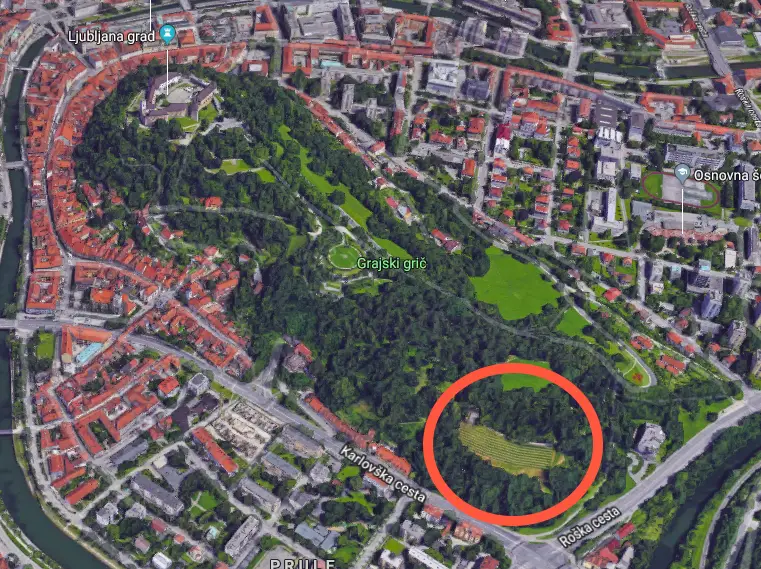
Screenshot from Google Maps, showing the location of the Castle vineyard
Ljubljana Castle
The city’s main attraction is said to be the top tourist draw in the country overall, and to my mind it earns a spot near the top just for the history and views. But beyond that the current owners, the City of Ljubljana, have laid out a varied, interesting and enjoyable programme of events, one that rewards regular revisits.
On all 2020 is an Exhibition of Slovenian History, included in the price of a Castle ticket, that takes you through prehistory and the Romans, the Middle and early Modern Ages, the 19th century and WWI, the Kingdom of Yugoslavia and WWII, Yugoslavia, independence and after. On until 22 March 2020 you can enjoy an inflatable spatial installation from Nina Koželj (free to enter).
At one of Castle hill there's a many walking and jogging paths, with good views of the city. At the other end, where the Castle sits, there’s a lot more than fresh air on offer. There are guided tours, restaurants, a café, Castle museum, puppet museum, a Watchtower you can climb to the highest point in the city, art shows, dances, live music, movies under the stars, festival days and more – enough to reward multiple trips up the hill through the year. All of these activities and events can be found on the Castle website, while on TSN you can see “25 things to know about Ljubljana Castle” here, and “Ten Ways to Enjoy Ljubljana Castle” here.
Museums and galleries
Most public galleries and museums are closed on Mondays, although not the National Museum.
Bežigrajska galerija 2 – Take a trip to Vodovodna cesta 3 and you'll find nothing this week, according to the schedule, as the place will be between exhibitions.
Cankerjev dom – On until 3 March 2020 there's an exhibition on Ancient Greek Science and Technology. Details here.
Plečnik's desk. Photo: JL Flanner
Plečnik’s House is worth a visit if you want to learn more about the architect who gave Ljubljana much of its character, and it's also in a really nice part of town, Trnovo, just a short walk or cycle upriver. Read about our guided tour here. Until 10 May you can see History of the Future. Archetypes of Plečnik's architecture – summarising the ideas of selected Plečnik works.
Balassi Institute – The Hungarian culture centre is next to a Spar and Hofer, and not far from Dragon Bridge, and always has something interesting going on. Learn more here.
City Gallery – On until 5 April there’s a show from Vlado Martek, called Exhibition with Many Titles, the second part of a retrospective exhibition by the Croatian conceptual artist.
City Museum – The Museum in French Revolution Square an interesting permanent exhibition on the history of Ljubljana, from prehistoric times to the present day, with many artefacts, models and so on that bring the story alive.You can read about my visit here. On until August 2020 there’s Book. Reason. Knowledge. From Protestantism to Enlightenment (1500–1800), which presents the processes and events that encouraged and fostered the cultural and spiritual development in Ljubljana from the end of the 15th to the beginning of the 19th century – from humanism and Protestantism to the Enlightenment. More on that here.
The Faces of Ljubljana in the City Museum. Photo: JL Flanner
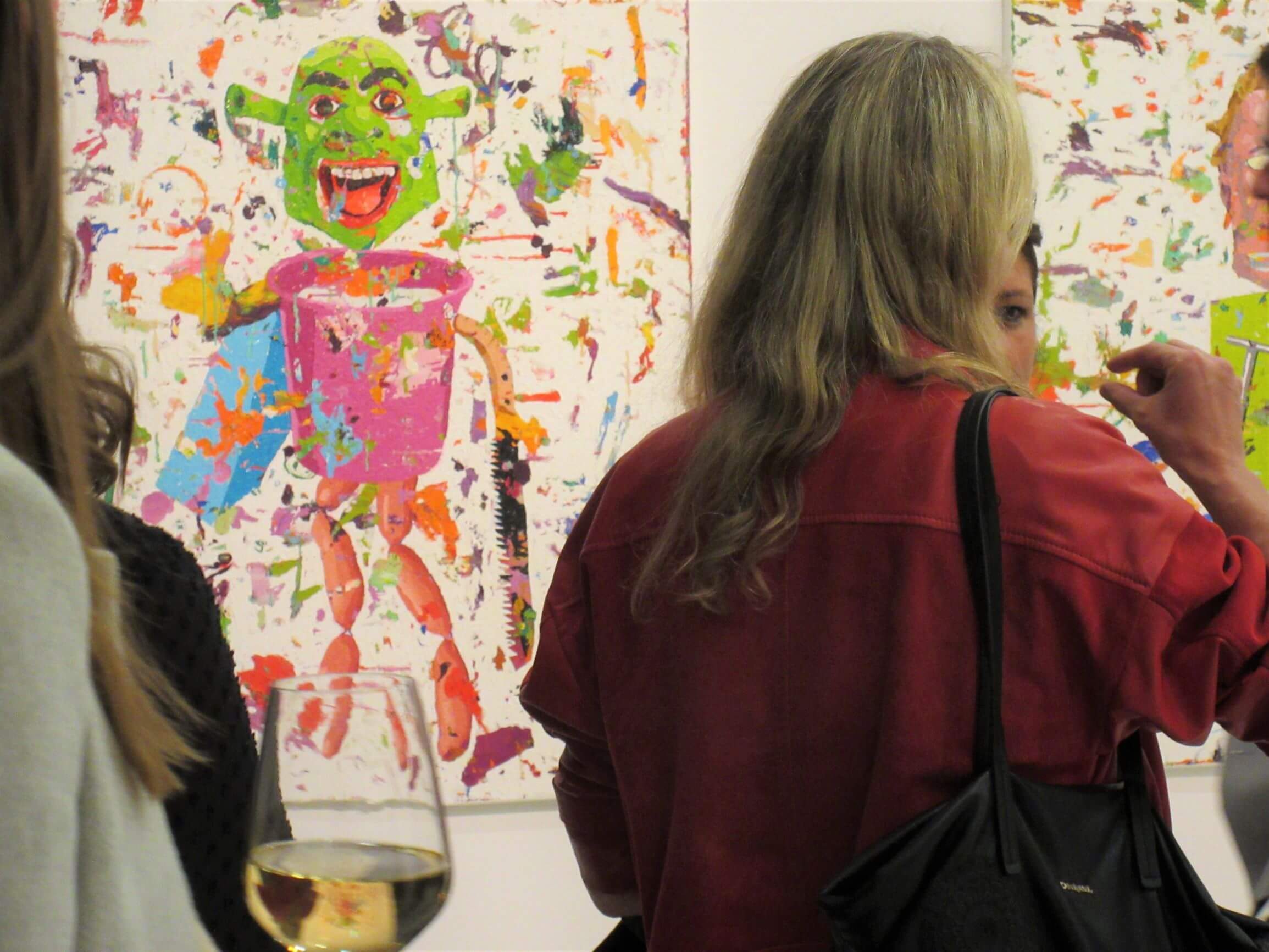
Drink like a pro - find gallery openings. Photo: JL Flanner
Galerija Vžigalica – Until 15 March you can enjoy Counter:Movement / Gegen:Bewegung, an exhibition of contemporary artistic positions in Carinthia, selected by the Klagenfurt University Cultural Centre – the Universitätskulturzentrum UNIKUM.
International Centre of Graphic Arts – A show of works by Helena Tahir.
MAO – The Museum of Architecture and Design has much of what you'd expect, along with some temporary shows and a good cafe. On until 31 January 2021 is An Object and a Collection, showing part of the museum’s valuable and extensive collection of objects related to architecture, design, and photography of the 20th and 21st centuries.
Moderna galerija – The main branch of this gallery, to be found near the entrance to Tivoli Park, has a good collection of modern art, as well a nice café in the basement.
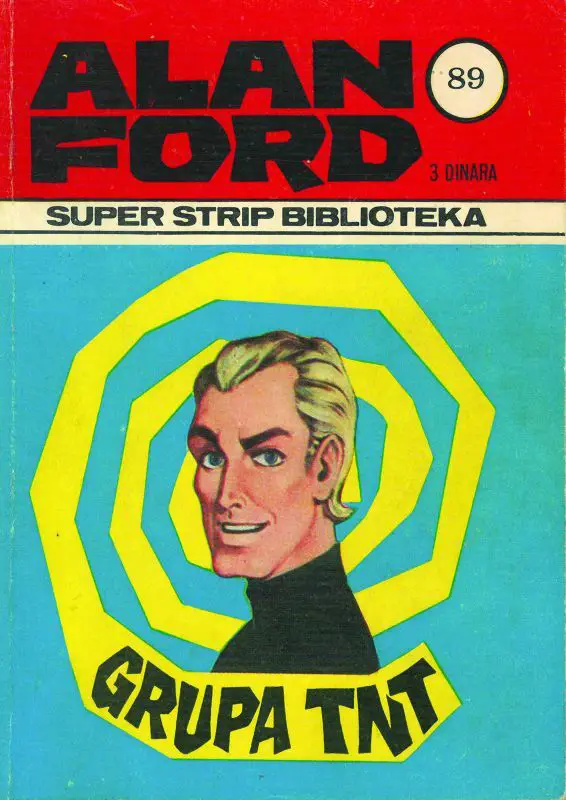
Alan Ford was recently at the National Gallery - read more about this comic book here.
National Gallery – The country’s main gallery has “the best” of what’s on offer from the Middle Ages to non-contemporary modern visual arts, and is in a great location for exploring other areas, just by Tivoli Park and opposite the main branch of the Moderna galerija. You can read about our visit to the room containing sacred art from the Middle Ages
The real Robba Fountain can be found in the entrance to the National Gallery - the one you see in the Old Town is a genuine fake, as seen below and reported here.
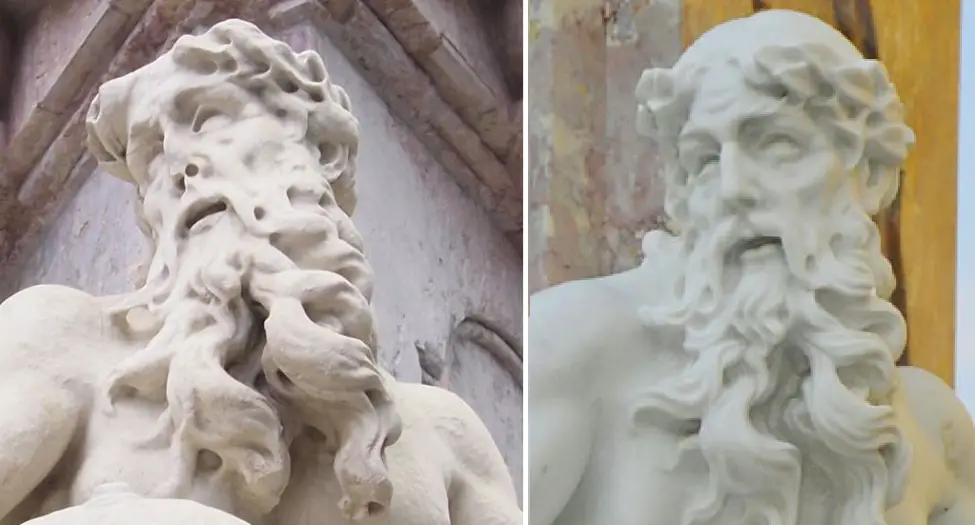
Photo: JL Flanner
National Museum of Slovenia – There’s plenty to see in the permanent collection here, from Roman times, Egypt and more. Meanwhile, the museum's Metelkova branch, located between one branch of the Moderna galerija and the Ethnographic Museum has some rooms on Church art, furniture and weapons, with the latter including more guns than you'll see anywhere else in town, and quite a thrill if coming from a nation where such objects are not household items. A Millennia of Metallurgy in Slovenia is on until 3 May 2020.
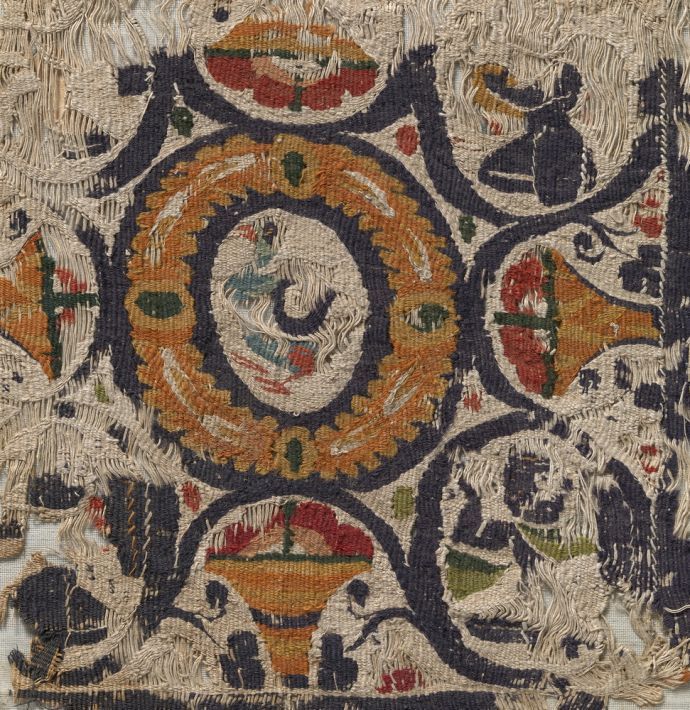
A fragment of a Coptic textile; 5th–6th cent.: Upper Egypt; linen, wool; National Museum of Slovenia. Photo: Tomaž Lauko
Until 24 May 2020 you can see Coptic Textiles from the Collection of the National Museum of Slovenia at the branch in the Metelkova museum quarter, by the Ethnographic Museum and the Museum of Contemporary Art. Details.
Natural History Museum – Until 18 June 2020 there’s Enlightened Natural Sciences: Scopoli and Zois, looking at the lives and legacies of two pioneering naturalists, on the both Slovene and global scales, Sigismondo (Žiga) Zois and Giovanni Antonio Scopoli.
National Museum of Contemporary History - Tucked away in park Tivoli, you can see a permanent exhibition on Slovenians in the 20th century.
Slovene Ethnographic Museum – The museum has two permanent exhibitions. One of these is called Between Nature and Culture, and has a great collection of objects from Slovenia and around the world, well worth the trip up to the third floor to see it (as recounted here). Nani in Ljubljana is on until 1 March 2020, in which Nani Poljanec, the folk creator and author of the exhibition, reveals fragments of his life, his roles and his mission. Until the same date there’s also a show on “Ravenski pust”, a Shrovetide custom which, according to village elders, represents an ancient pagan wedding and has been performed for more than a hundred years.
Union Experience – The Ljubljana-based brewer has a museum showing the history of the company, with the ticket also including access to part of the factory and a few samples of the product. You can read about our visit here.
It's not a formal museum, but if you're interested in "Yugo-stalgia" then you'll enjoy a trip to Verba, a small, privately run space that's crammed with objects and pop culture items from the era, and is conveniently located at the start of one of the short walks to the castle. It's also a great place to take pictures, if you leave a donation, and you can read more about it here.
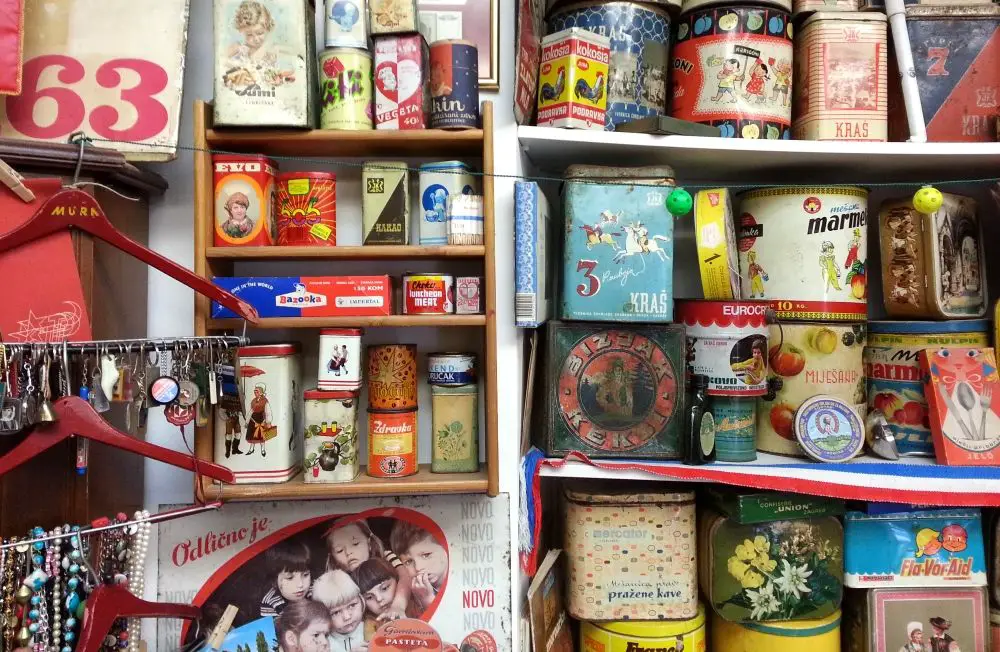
Verba. Photo: JL Flanner
Alternative Ljubljana isn't a museum or gallery, as such, but instead turns the city streets into a museum and gallery. Learn more about their tours of street art, history and LGBT Ljubljana here.
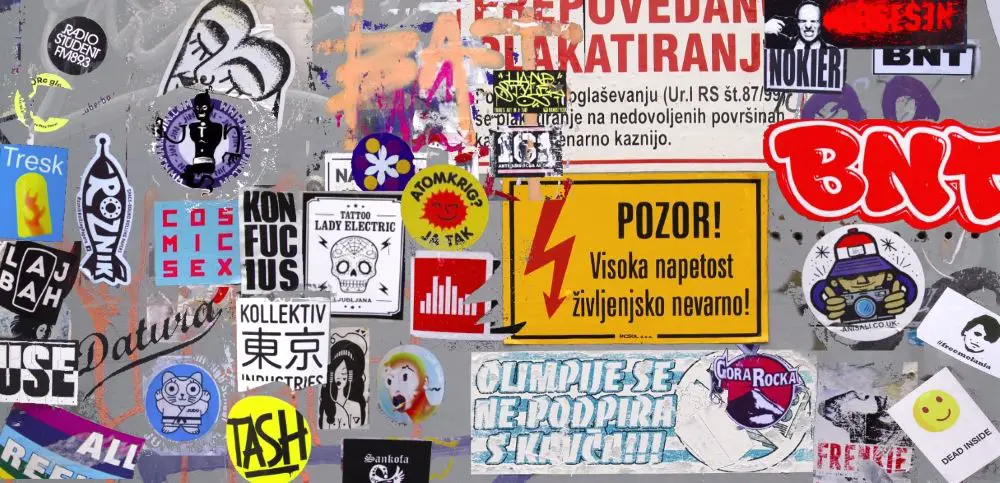
Photo: JL Flanner
Other things to do in Ljubljana
Learn more about Ljubljana with "25 things to know about Slovenia's green city of dragons", or take a look at our guide to spending from four to 48 hours here.
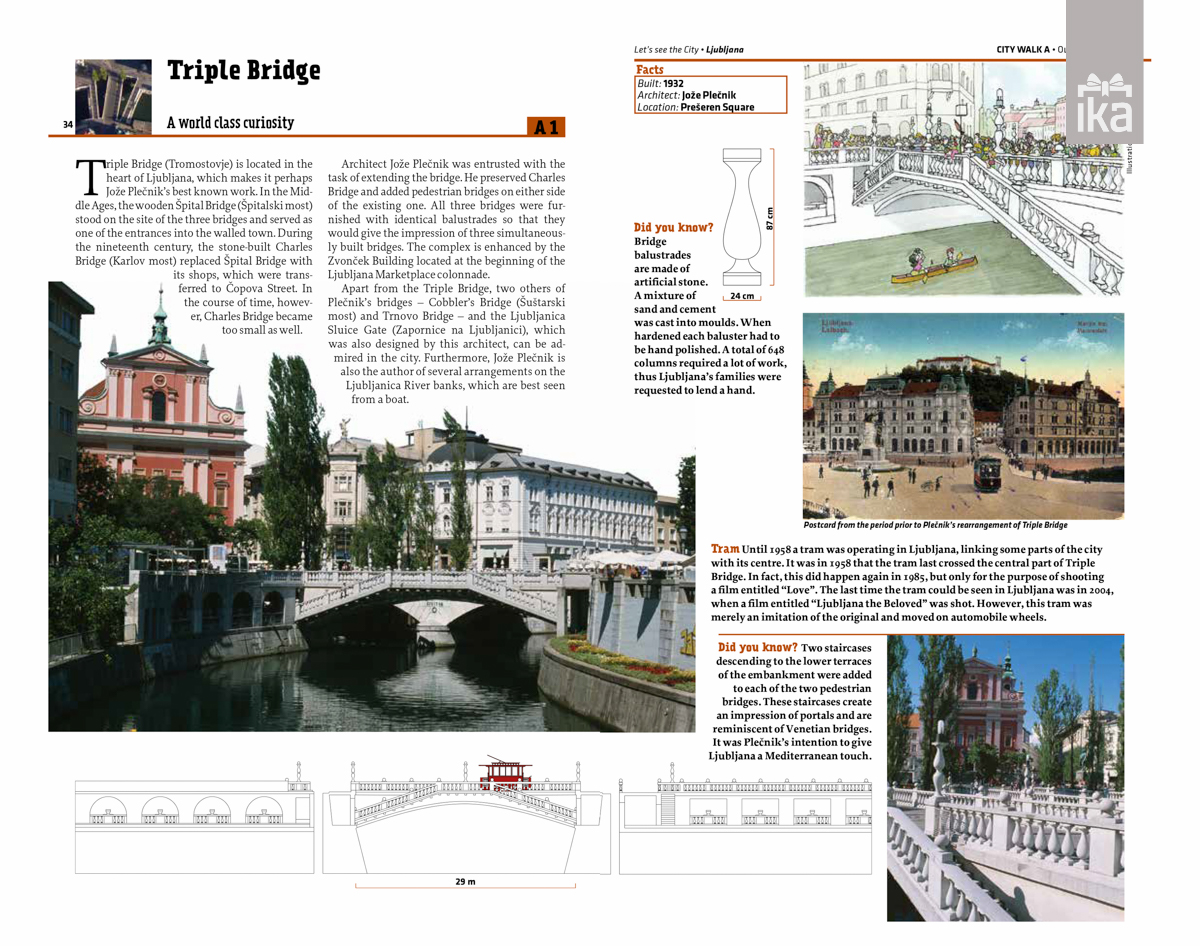
If you like the city's architecture then check out this great book, Let’s See the City - Ljubljana: Architectural Walks & Tours, with our review here and a page from the book shown above. We took a walk with one of the authors who showed us how much there is to learn and enjoy if you slow down and pay attention - read about that here.
Ljubljana has some beautiful buildings from the early 20th century, in the Secessionist style, like the one below. Learn where to find them here.
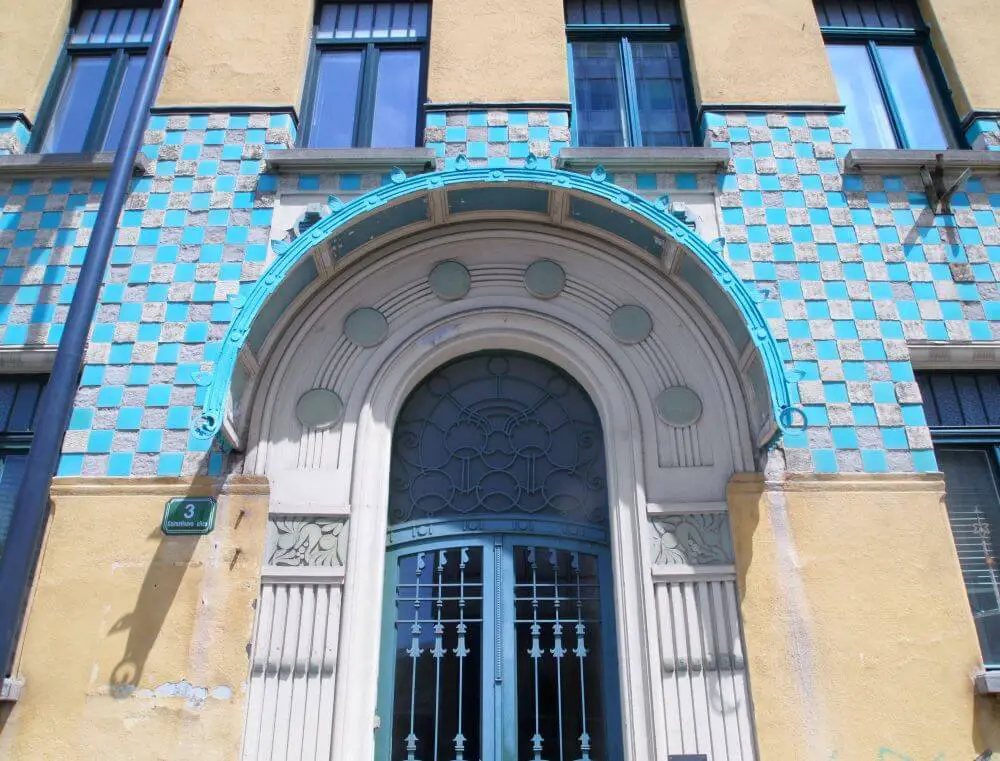
Photo: Neža Loštrek
For something a little more brual, check out Republika trg / Republic Square, in the heart of the political quarter.
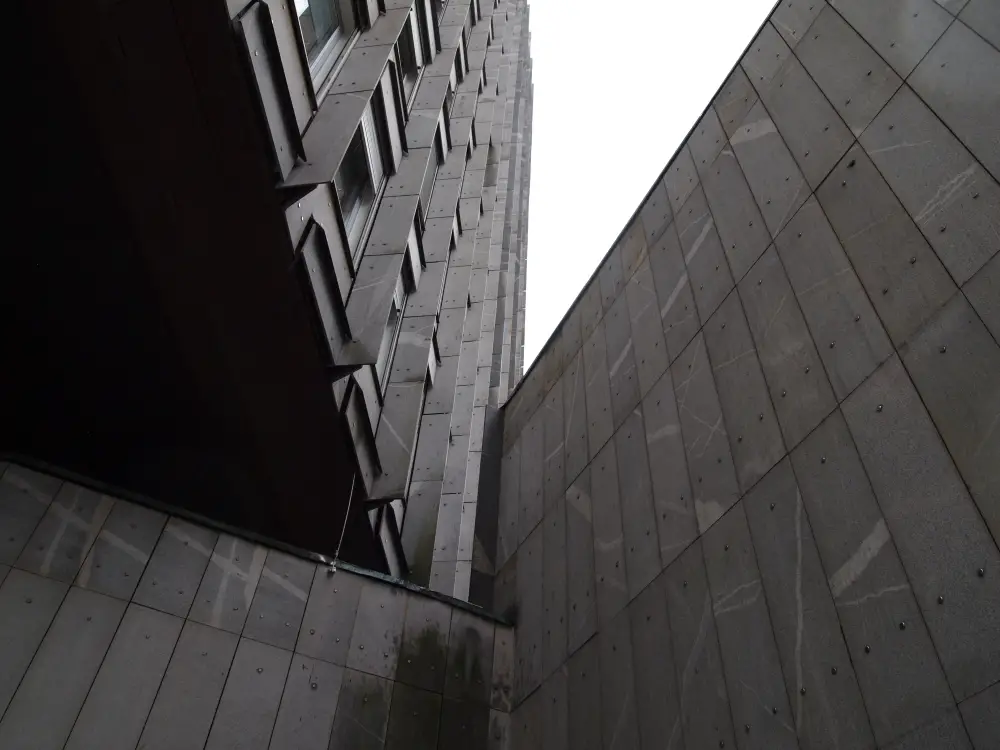
Photo: JL Flanner
Photo: JL Flanner
Some view of the city you can only get from the river. If you'd like to take a boat ride then read about my experience here. If you'd like to spend an evening painting with others, then take a look at Design with Wine, which organises painting parties on Trubarjeva cesta,
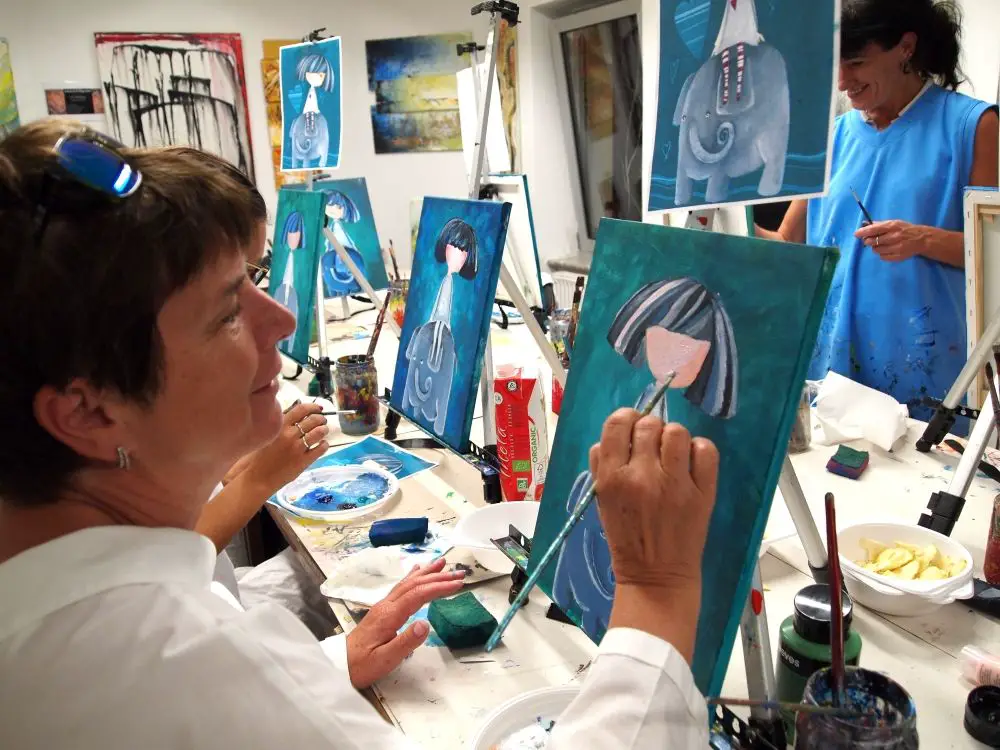
If you want to see some antiques, then check out the wonderful Antika Carniola, as discussed here. The man behind it, Jaka Prijatelj, has a fine eye for life on this street, as you can see on his Facebook account.
Photo: JL Flanner
If you’re in town and want to go jogging or walking in nature, why not take another look at the Castle, with a brief guide to the trails here. If you want something bigger, head to Tivoli Park.
And if you're bored with the Old Town, why not take a walk, cycle or boat ride to nearby Špica and enjoy the riverside life. Learn more about that here.
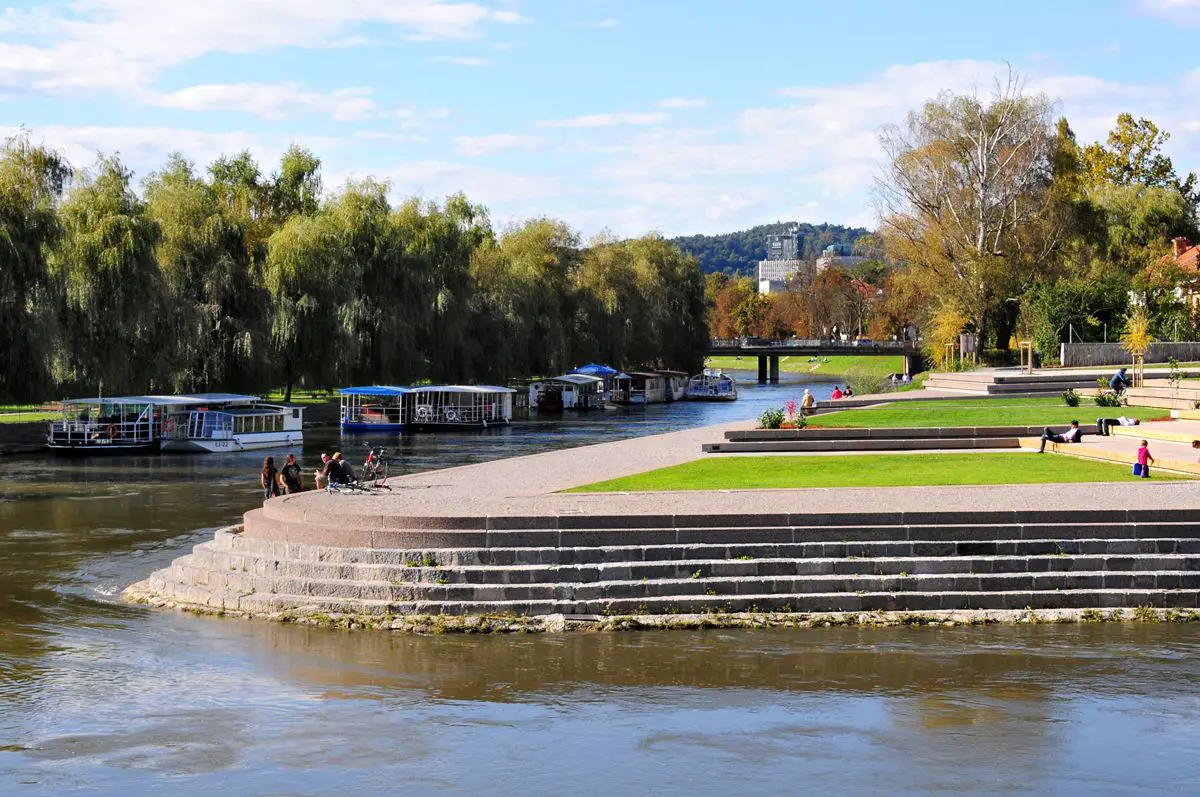
visitljubjana.si
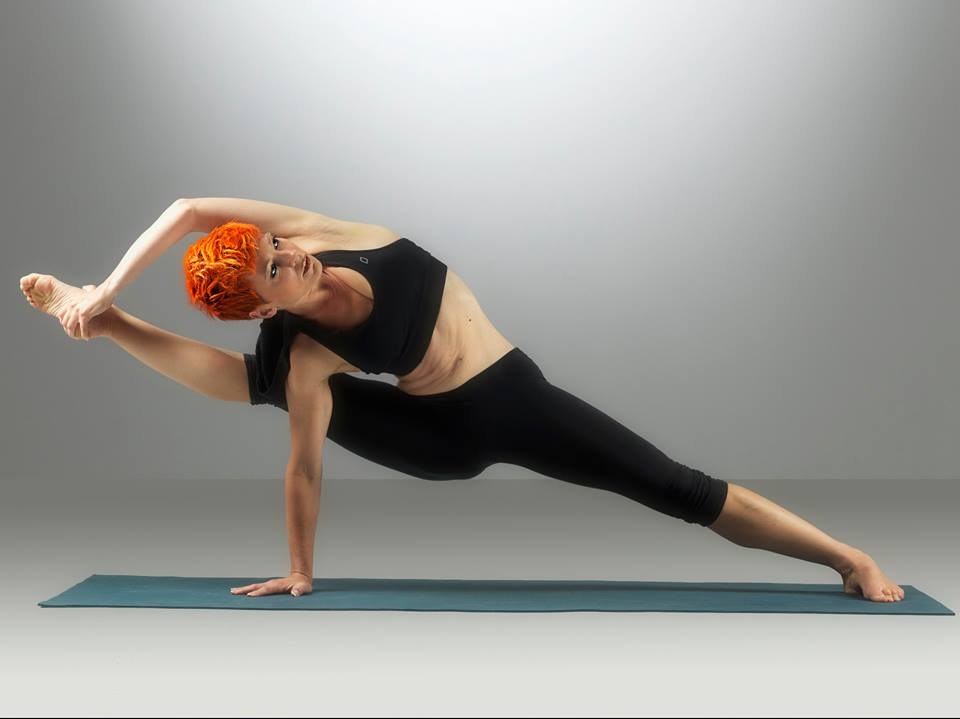
Want to stretch and breath? Then check out our list of drop-in yoga classes for tourists, visitors and the uncommitted. We go to Nataraja Studio, by Dragon Bridge, and here's a story about it.
Prefer to have someone else stretch you? The check out the totally legit massages you can get from Sense Wellness - either in one of their spas or in you home, office or hotel. (And - to repeat - these are legit and non-sexual in nature)
There are some golf courses near Ljubljana, but even ones further away are not far, as seen in our list of all the golf courses in Slovenia, which usually run until the first snow.
![]()
Photo: maxpixel.net, public domain
Daytrips
Most of Slovenia is only a few hours from Ljubljana, and you can easily visit Lake Bled, Lipica Stud Farm, Postojna Cave, Predjama Castle, the coast and other locations, while if you'd like to take a photo of from that bench in Bled, then you can learn how to get there here. If you’re looking for something more ambitious, then check out our recent guide to the 17 members of the Association of Historical Towns of Slovenia. We've also written guides on spending from four to 48 hours in Bled and Piran.
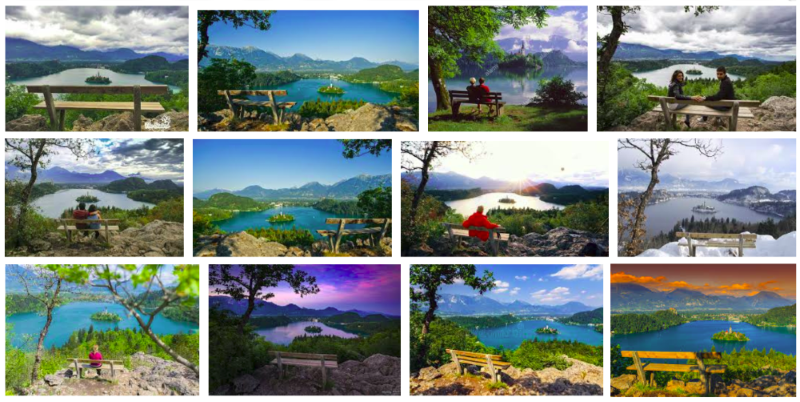
Photo: Google Image Search
Getting around
If you want to get a Ljubljana Tourist Card, which gives you travel on the city buses and entry to a lot of attractions, then you can read more about that here, and if you want to use the bike share system, as useful for visitors as it is for residents, then you can learn more by clicking this. Visitors with reduced mobility will be pleased to find that downtown Ljubljana is generally rated as good with regard to accessibility, and that there’s a free, city-sponsored app called Ljubljana by Wheelchair highlighting cafés, attractions and so on with ramps, disabled bathrooms and Eurokey facilities, which you can read about and download here. Manual wheelchair users can also borrow, for free, an attachment that will motorise their equipment, as reported here.
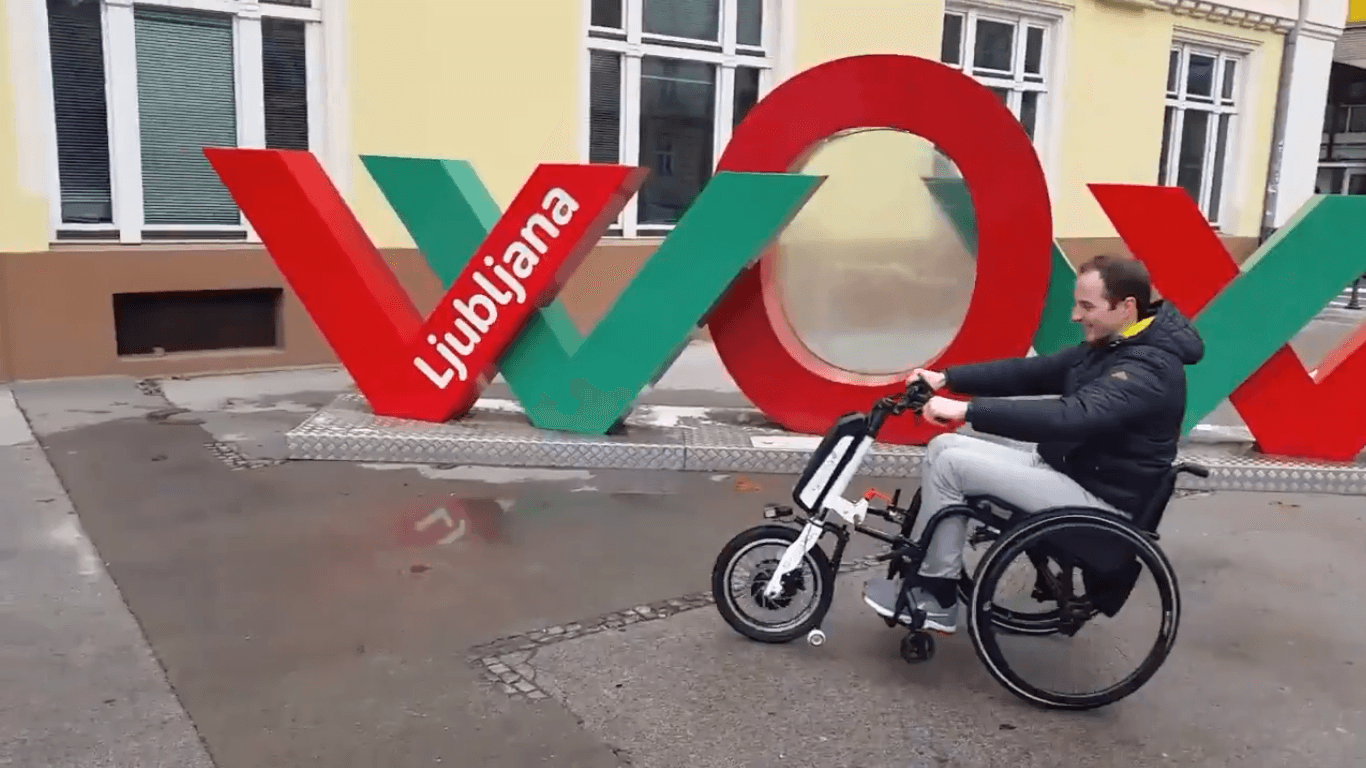
Screenshot from a Twitter video
If you’re driving into town and don’t know where to park, our guide to how to park in Ljubljana is here.
Emergencies
Ljubljana is a small and relatively safe city, but if need to contact the police then there’s a special number for foreigners, and that’s 113.
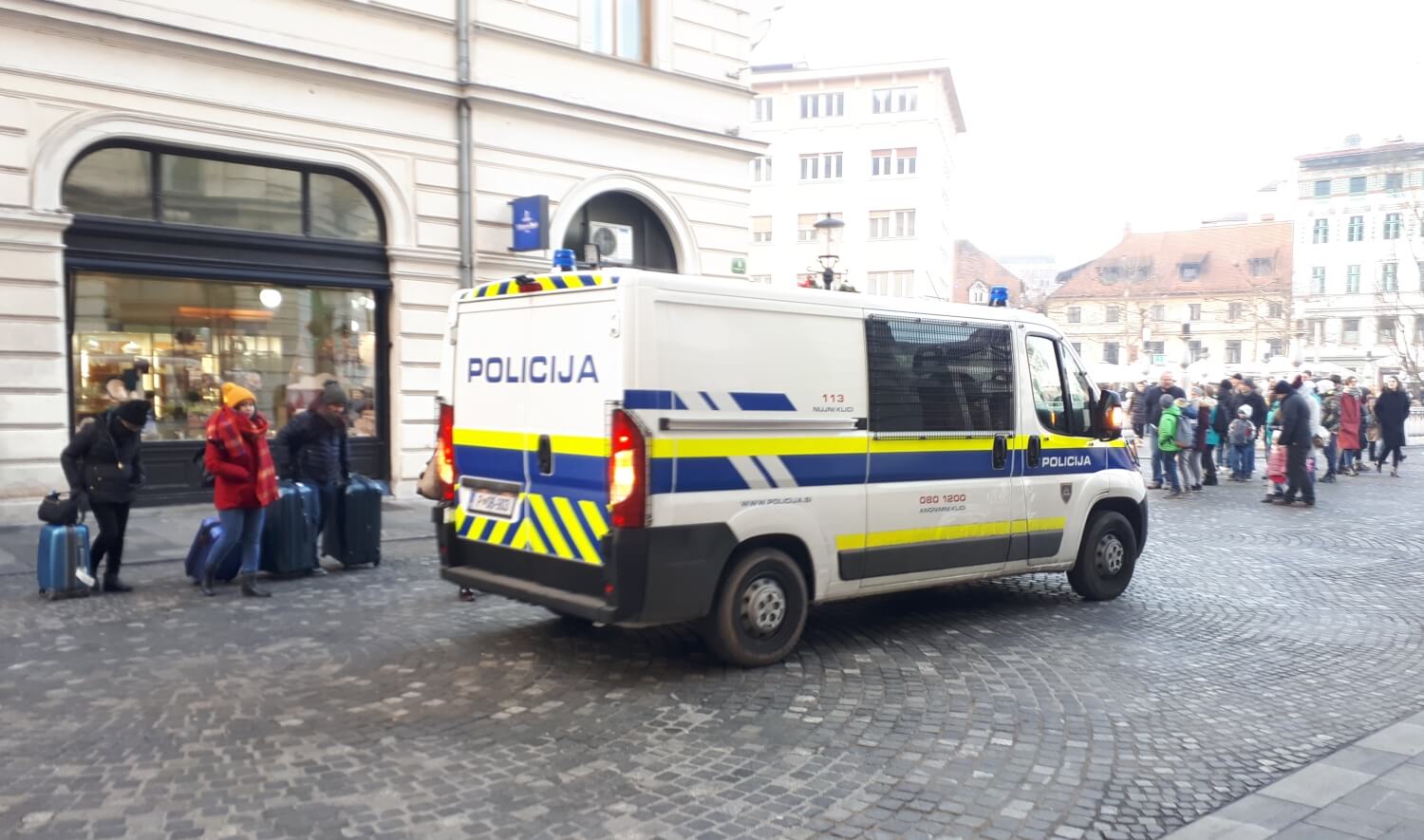
Photo: JL Flanner
There aren't many places to eat after midnight, and most of them are by the train station, as reported here.
Want / need cigarettes but the stores have closed? Here's an incomplete list of bars downtown that will satisfy your craving for the demon weed. While if you’re having trouble with the ATMs then here’s a guide to the Slovene you’ll see on screen. If you get a hangover then find out where to get paracetamol (and prescription drugs) in Ljubljana here, while details on emergency birth control can be found here.
STA, 8 February 2020 - Poems by France Prešeren will be read at several events on Culture Day, when Slovenia pays tribute to its most celebrated poet and celebrates art. A number of events will take place around the country and many museums and galleries will open their doors to visitors free of charge.
Culture Day is also an opportunity to reflect upon the role Romantic poet Prešeren (1800-1849) and culture play for the nation.
The Slovenians like to say they have survived under foreign rule as a nation due to their language and culture, and the authorities decided back in 1945 to declare 8 February Culture Day in remembrance of the day when Prešeren died.
Today's main ceremony will be held in front of Prešeren's home in Vrba, the village in the north-western Gorenjska region where he was born.
The tiny village is eager to cherish the memory of its most famous former resident, and has big plans to turn create a venue where the poet could be properly celebrated and presented to the public in a modern way, including with new facilities offering food from Prešeren's times.
Visitors to his home, which has long been a tiny museum dedicated to Prešeren, will this year have an opportunity to see a new permanent exhibition on the poet.
The Association of Theatre Actors will put on its annual Culture Day reading of Prešeren's poetry in front of the monument dedicated to him in Ljubljana, as well as in Maribor and Nova Gorica.
Kranj, the city where Prešeren served as a lawyer before he died, will organise the annual outdoor Prešeren Fair and Culture Minister Zoran Poznič will lay a wreath at the poet's grave. Poznič and Prešeren Fund Board chairman Ira Ratej will host a reception for this year's Prešeren Prize laureates.
The top national accolade for outstanding lifetime achievements in arts was conferred last evening on photographer Stojan Kerbler and on choreographer Milko Šparemblek.
The prizes for achievements in the past three years went to graphic designer Nejc Prah, actress Nina Ivanišin, composer and accordionist Luka Juhart, film director Rok Biček, translator Suzana Koncut and costume designer Alan Hranitelj.
The laureates will also join President Borut Pahor at the Presidential Palace in the morning, which will be open to the public. Pahor, who will earlier lay a wreath at the Prešeren Monument in Ljubljana, will address the visitors on the occasion.
Meanwhile the National and University Library (NUK) in Ljubljana will put on display manuscripts, translations and printed versions of Prešeren's Zdravljica (A Toast).
The patriotic and pacifist poem in which Prešeren makes a case for Slovenian identity is one of his best known poems, and one of its stanzas is the Slovenian anthem.
NUK said the poem "brings a deep humanitarian message, and its free-thinking and cosmopolitan verses are still topical today".
Prešeren Prizes conferred at Culture Day ceremony
STA, 7 February 2020 - The Prešeren Prizes, the top national accolades in arts and culture, were conferred Friday on the eve of Culture Day, a public holiday dedicated to artists. The two lifetime achievement prizes went to photographer Stojan Kerbler and choreographer and dancer Milko Šparemblek.
The 81-year-old Kerbler, the first photographer ever to win the Prešeren prize, recounted how in his early career photography had not been considered art.
He said started changing in the 1960s, when a younger generation of photographers unburdened by the war started to make a mark, gradually establishing it as an art.
But with Slovenia still lacking a photography museum, he called on the authorities to finally establish a museum dedicate solely to photography.
Šparemblek, at 91 probably the oldest active choreographer in the world, dedicated the award to his colleagues in dance and theatre and paid special tribute to the legendary Slovenian ballet dancers Pia and Pino Mlakar, who achieved global fame in the first half of the 20th century.
Six Prešeren Fund Prizes for accomplishments over the past three years were also handed out. The recipients are designer Nejc Prah, actress Nina Ivanišin, composer and accordionist Luka Juhart, film director Rok Biček, translator Suzana Koncut and costume designer Alan Hranitelj.
This year's ceremony, taking place in the Cankarjev Dom arts centre in Ljubljana, was the work of director Vito Taufer, with actor Tadej Toš the host.
Taufer took the text of the Slovenian national anthem Zdravljica (A Toast) by France Prešeren (1800-1849) as the starting point, drawing on its ideas of friendship, mutual respect, peace, kindheartedness and freedom. The ceremony featured a recitals, a choral rendition and even a pop version of Prešeren's work.
The honorary speaker was the president of the Prešeren Fund management board Ira Ratej, who stayed true to tradition in a scathing speech by highlighting the precarious state of financing in culture and status of artists in society.
Describing herself as a "the average cultural parasite working in the public sector," she said it was tragicomic that year after year artists have to prove their value to society, whereas many people continue to denigrate artists by accusing them of being good-for-nothings who receive budget funds.
This year's Culture Day ceremony has also been accompanied by warnings about issues in Slovenian culture.
Standing out is Thursday's letter by the Glosa trade union of culture, which issued an appeal to Culture Minister Zoran Poznič, as well as his predecessors and successors, to stress culture workers need a minister that is a competent talking partner.
The union argues culture workers are time and again faced with a "wall of silence, arrogance or simply unwillingness or inability to work well in culture's favour".
The covers and editorials from leading weeklies of the Left and Right for the work-week ending Friday, 7 February 2020
Mladina: SMC should not join SDS-led government
STA, 7 February 2020 - Looking at the prospects of a coalition led by the Democrats (SDS) being formed after the demise of the Marjan Šarec government, the left-wing weekly Mladina argues in Friday's commentary that the Modern Centre Party (SMC), seen as key to an SDS-led government, should not join forces with the SDS since this risked undermining democracy.
Recalling the policies of SDS and its leader Janez Janša, Mladina says that the party has been "driving the nation mad for thirty years" by creating a state of emergency all the time, recently leveraging a "special propaganda machine financed by the 'friend' Viktor Orban, the prime minister of Hungary, who is not concealing his desire to first economically and then politically subjugate Slovenia."
"The SDS made this pact with Orban to ascend to power with his help. In 2018 it did not succeed, making Orban angry. Now Janša has a new opportunity to carry out what he is expected to do," Mladina says in its editorial.
Arguing that this is the framework, the "political ring" in which Slovenian parties operate, the paper says that this game is destructive for everyone who engages in it. It destroyed former SMC president Miro Cerar and, to a significant extent, Marjan Šarec.
"Is it possible, then, that the SMC enters a government led by this man and this party, after what they have been through because of him? And with the awareness of what kind of historical burden they are taking on," the paper wonders.
"Janša needs SMC deputies to complete his mission, just like Orban needs Janša to carry out his plan to economically subjugate Slovenia to Hungary. Does the SMC really think they can stop this from the inside? In the five and a half years they have spent in Slovenian politics, have they not seen and grasped the dimensions of the politics that Janša represents?
"There is no good reason why after all this the SMC should buy into his latest provocation and allow itself to be used as the horse on which his ostracising policy and money from his master in Hungary will be brought to Slovenia.
"MPs are not in parliament to form governments. Yes, they do that as well. But the reason why we vote for them in general elections is because they are the guardians of democracy. These are their toughest moments. But this is exactly why we call them representatives of the people," the paper concludes in Guardians of Democracy.
Reporter: Politics revolves around Janša
STA, 3 February 2020 - Looking at the political situation in Slovenia following the resignation of Prime Minister Marjan Šarec, the right-leaning weekly Reporter speculates it will all revolve around Democrat (SDS) leader Janez Janša again if an attempt is mounted to forge a new coalition to avert a snap election.
It has long been known that the only thing Janša is interested in domestically is the office of the prime minister. It is also clear he is not willing to step aside in favour of another SDS politician to make it easier to forge a coalition, the paper says in Monday's commentary Shock Doctrine.
"Janša would enter a coalition with anyone just to become prime minister for the third time. Two years ago almost everybody rejected him, now the situation is different," the commentator says, singling out the Modern Centre Party (SMC) and Pensioners' Party (DeSUS) as the most likely coalition partners alongside New Slovenia (NSi).
"Janša's chance of becoming prime minister is definitely better than two years ago, perhaps it is in fact his last opportunity. If he fails yet again, his SDS may suffer in the event of a snap election. The additional voters that Janša badly needs to supplement his loyal base may wonder why he should get their vote if he cannot put together a coalition."
"But if a snap election is held, it will be yet another election against Janez Janša. And this is what Marjan Šarec is counting on - fear of Janša," Reporter concludes.
All our posts in this series are here



